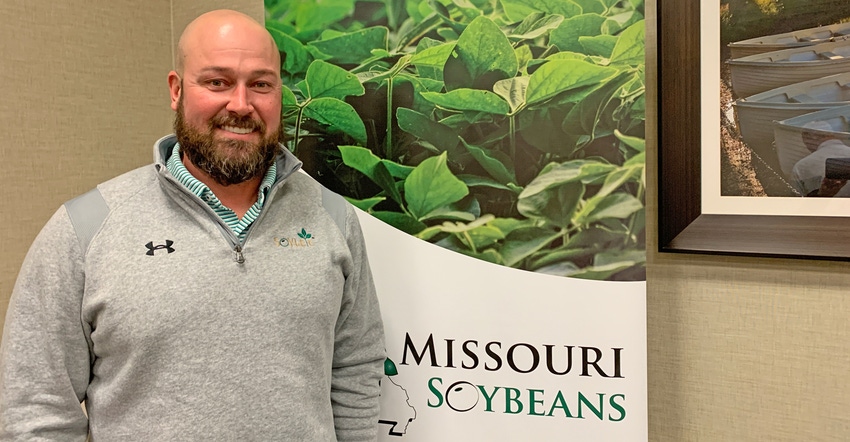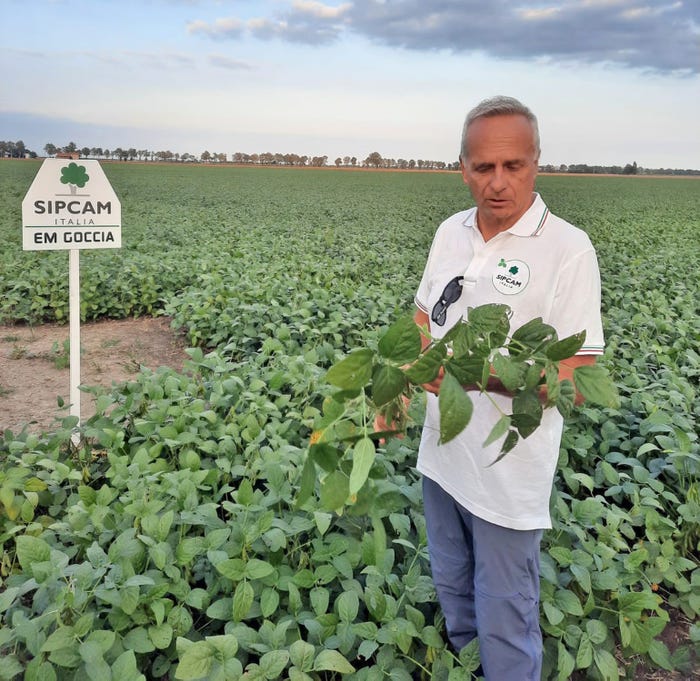
A high-oleic soybean trait developed in the Bootheel of Missouri has found its way onto farms in Europe.
“This is the ultimate goal,” says Bryan Stobaugh, Missouri Soybeans Association director of licensing. “As a farmer’s child, you want to see it fed. You want to take care of people. That is the farmer life.”
Too often, he finds advancing innovation discovered in the public breeding sector from checkoff-funded research on the world stage stalls due to regulation. However, the Missouri Soybean Merchandising Council found a way to offer its Soyleic trait to the world.
A partnership announced between Missouri Soybeans and Sipcam Oxon allows the company to release the first commercial license of the Soyleic trait outside of the U.S.
Sipcam Oxon, headquartered in Milan, Italy, is a multinational company in the agriculture sector. The new release, which has been five years in the making, offers Soyleic to the European Union as a non-GMO option to remain competitive in the growing food and agriculture sector, Stobaugh says.
“With this latest venture,” he explains, “Sipcam Oxon can now offer a healthy alternative and a new soybean oil product in their section of the world.”

IN THE FIELD: “Sipcam has been developing soybeans with unique features — appreciated by farmers and processors — building high-value supply chains,” says Piero Ciriani, the company’s seed business manager.
Stobaugh sat down with Missouri Ruralist to answer a few questions about the new Soyleic release in Europe, and what it all means to soybean growers in the nation’s heartland:
How did this partnership with Sipcam start? This opportunity spawned from one of our private entities that had been breeding with us. They had been working on providing non-GMO crops to foreign partners. They were getting genetics from the U.S. and testing them to grow there. High-oleic came into the picture with the group we were working with; they sent a few Soyleic lines over for testing.
What was the EU approval process like for a new soybean trait? It’s five years in January that I have been working on this. In Europe, a seed trait has to grow out for three seasons. It has to meet the standards of the Europeans. Just to even be grown, it has to be ensured that it's a quality product. You can't just sell something that's not checked by the government.
When Sipcam took the Soyleic trait in three years ago, it was a win. This is the step to getting us into the European market. Once you're identified as a crop, you still have to go through the process every time you bring a new trait over to be planted, but this is showing that we're providing quality product all the way through.
When is it available to European soybean farmers? Farmers will have access to the Soyleic trait in the 2022 growing season. Sipcam Italia is the seed company under Sipcam Oxon. They received the initial seed source from the U.S. but have been growing their own Soyleic seed in their plots, increasing seed production. They are using Soyleic in all their growing regions and expanding. What we’re doing next is trying to figure out which new genetics do we need to send over for them to evaluate in the 2022 season, to see if we can help spread their diversity through maturity groups.
How will you know if EU farmers adopt this new technology? They're an IP group, identity preserving it all the way through the chain. What everybody wants to know is where did my food come from? What you get over in the European culture is consumers who want to know that a product was grown sustainably. They want to know that it's non-GMO. That’s very important. So Sipcam is going to be able to report back to us how many people grew Soyleic and how many units.
With the increase in world demand, where is domestic demand for Soyleic? We're now exceeding our own demand. We can't even grow enough Soyleic seed fast enough to meet demand. Anyone interested in growing Soyleic seed, please get in contact with us at Missouri Soybean. We link them up with licensees across the country and make sure that we can keep growing that footprint as we grow with our new crushed facilities that are coming into Missouri, or crushed facilities from our neighboring state soybean boards. We've got the mechanism to make it work. Let's let the checkoff work for you.
The Soyleic trait is available to license from the Missouri Soybean Merchandising Council. Find out more at soyleic.com.
Trait discovery
In the late 2000s, Grover Shannon and the soybean-breeding team at the University of Missouri’s Fisher Delta Research Center discovered a non-GMO high-oleic trait that stemmed from a traditional cross in the field. Shannon partnered with a USDA molecular geneticist, Kristin Bilyeu, to evaluate the importance of a non-GMO high-oleic trait.
The resulting patents were licensed to the Missouri Soybean Merchandising Council. Led by MSMC and funded through the soy checkoff, several land grant universities and private organizations continue work on what is now branded as Soyleic. It is now in 14 states across the country, with maturity groups 1 to 7.
About the Author(s)
You May Also Like






